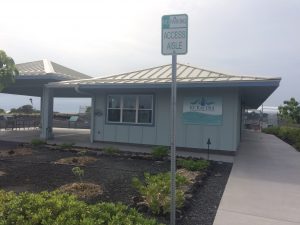In the CEM program, we often assign each other to a marine species or ocean issue. For instance, in the class of 2017, we have the fisheries crew, the marine mammal die-hards, a few wetlands folks—you name it. Though it may sound limiting or childish (it is silly, we know), it helps us weed through the many, many threats facing the health of our oceans today and help us navigate a wide course offering at the Nic School.
So, as the resident sea-turtle-and-ocean-noise student, I intentionally set out this summer to distance myself from that topic, and instead gain experience with a different issue other than noise in the ocean, as well as (gasp, the horror…) additional species besides turtles.

Thanks to a generous grant from the Edna Bailey Sussman Fund, which I was connected to through the Nicholas School, I’m working with the State of Hawaii’s Department of Land and Natural Resources (DLNR) out of Oahu on several projects related to sustainable fisheries management and its impacts on protected species policy. (Protected species in this situation refers to Hawaiian monk seals, green and hawksbill sea turtles, and false killer whales, though the term generally refers to marine taxa listed under the Endangered Species Act or Marine Mammal Protection Act).
My first two weeks of work have already been a whirlwind, but incredibly exciting—two events related to local fisheries on the Big Island, multiple meetings and interviews with staff at the National Oceanic and Atmospheric Administration (NOAA) and U.S. Fish and Wildlife Service (USFWS) for one of my projects, and a general crash course in marine conservation in Hawaii versus the East Coast, where I’ve conducted all former marine-related work.

The biggest surprise so far has been just how strong the sense of community is in Hawaii. I expected this in part thanks to Dr. Andy Read’s marine conservation biology in Hawaii’s class blog, but the magnitude as to which the community is involved in the policy process—from development to enforcement—is not something I’ve experienced before on the East Coast. I’ll loop back on this topic in another blog once I dive into it a bit more over the next few weeks.
One of my favorite aspects of DLNR’s work with fisheries and protected species is that they do an incredible job involving local fishermen in the policy process. DLNR is working to ensure that fishermen can continue fishing and protect these threatened or endangered species simultaneously, rather than restrict all fishing for the purpose of these species.
This approach—involving people in a path to a sustainable future—is one of the pillars of the Nic School program. And when I left my job at Oceana about a year ago for grad school, this thought process was also the backbone of their newest and largest campaign, “Save the Oceans, Feed the World,” that involved local fishermen and seafood consumers in their campaign work. It’s really nice to see this theme come full swing between Oceana and the Nic School within just a few short days of being in Hawaii.
I’m still brand new to working with DLNR and to Hawaii itself, so my perception and understanding of marine conservation in such a unique marine environment is still in its infancy. It has, however, been really rewarding to see many of the themes and topics I learned about in the Nic School this past year come to life. Stay tuned for more as I continue to get my feet wet!


One thought on “Eating, Breathing, and Sleeping Protected Species”
Comments are closed.